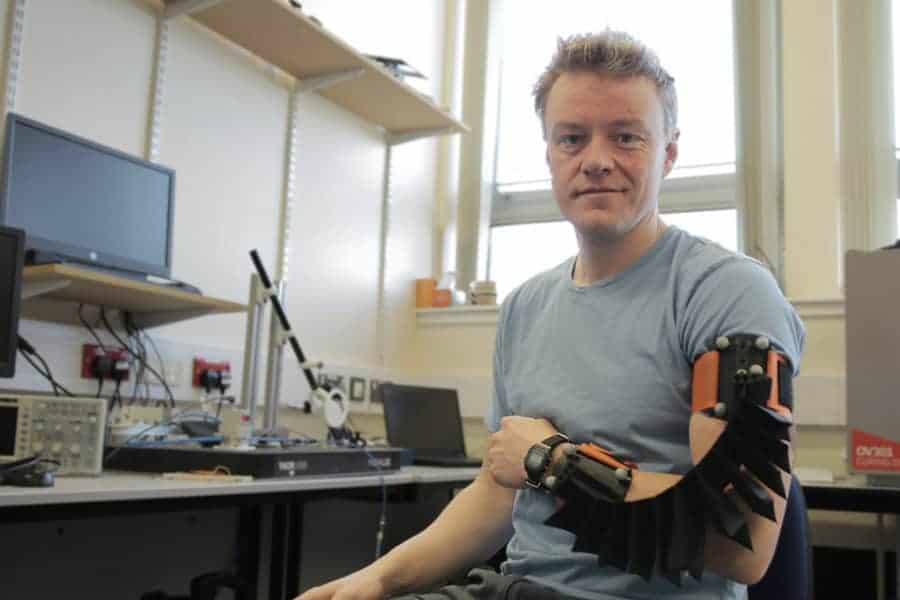University of Aberdeen develops ‘robo arm’ to help users recover mobility from strokes

A researcher from the University of Aberdeen has developed a soft robotic arm to help people recover their mobility from strokes.
James Greig, a final year PhD researcher, has designed and built the device which could allow patients to carry out invaluable physiotherapy at home in addition to existing assisted physio sessions.
The lightweight, affordable equipment uses flexible, inflatable material to support the arm as it makes basic repetitive movements – essential for rehabilitation following a stroke.
Like many public services, access to physiotherapy is limited and so James identified a need for technologies that patients can use safely at home to compliment their regular physio.
James said: “What we’re trying to address is a product to address the lack of availability to physiotherapy for stroke patients who have maybe suffered some loss of mobility in the arm.
“I wanted to make a lightweight device that can be made readily available in the community. So it’s cheap, easy to wear and doesn’t need specialist assistance to use.
“It means people can have more physiotherapy so they can do some work at home as well as the work that they’ve been doing with the physiotherapist.”
All strokes are different depending on what part of the brain has been affected but many people will be left with high muscle tone where the muscles develop spasticity and the contracted muscles can leave the arm in an almost fixed pose.
Typically, throughout rehabilitation, physiotherapists will try to mobilise the limb. If done from an early-stage high spasticity can be reduced.
“We’re basically trying to mimic the same movement that physios will encourage in their sessions but using robotics in a way that allows people to do this at home without the physiotherapist actually being there. If we can augment the physio-led rehabilitation with some work they can do at home using the robotic device, then we can improve their recovery.”
The robotic device is worn on the arm, held on with straps and works by pumping air from a small compressor into a series of strips of material which inflate, press against each other and encourage movement in the limb – akin to a bicep curl.
While James’ innovation was designed with stroke patients in mind, it could be used to aid anyone undergoing physiotherapy on this specific movement of the arm.
Soft robotics such as these are a relatively new field which – in contrast to the rigid bodied robots built from metals and hard plastics – use flexible materials that can be used (among other things) to mobilise and move the limb.
“The key challenge is how we scale up these devices to generate enough force to allow them to work on larger joints without making them too heavy and too cumbersome.”
While it’s too early to begin clinical trials, information and feedback sessions held with a group of physiotherapists saw encouraging feedback for the device.
Thérèse Lebedis, Consultant AHP (Occupational Therapist) in Stroke, who has worked with James on the project, said: “This is an exciting development in the field of robotic technology, offering the potential to provide an adjunct to rehabilitation therapies such as occupational therapy and physiotherapy and the opportunity to increase intensity through repetition.”


